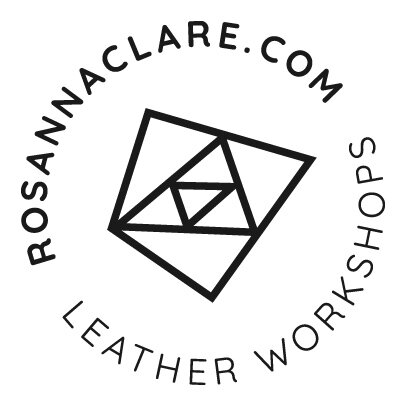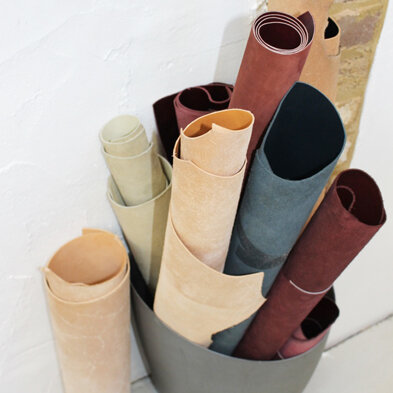ALL ABOUT LEATHER
Vegetable tanned leather
Leather is a durable, tactile and versatile material that has been used for a countless variety of products over thousands of years. It is one of a few materials that many believe actually improves with age. It is Important to know and understand a bit about how leather is produced in order to best know how to use and work with it.
Leather comes from the skin of an animal, mainly cow, sheep and pig hide. The skin is treated to preserve it in a process known as tanning and there are two main methods of tanning leather; chrome and vegetable.
Vegetable tanning
This is the traditional method utilising the tannins found in vegetable matter such as tree bark, wood, leaves and some fruits. Skins are soaked in liquid rich in these extracts producing strong and firm leather. This type of leather is therefore perfect for making things like saddles, belts and shoes as it retains most of it’s natural oils making it easy to mould into shapes and emboss with pressure.
Chrome tanning
This is a relatively modern way of dyeing leather compared to vegetable tanning. It was invented in the mid 19th century and uses a solution of chemicals, acids and salts including chromium sulphate. This method creates more soft and stretchy leather as the chemicals break down the natural fibres in the material. It is a much faster method and the leather can be dyed in a wide variety of colours making it much more preferable to the fashion industry. However, it is considered much more harmful to the environment due to the chemicals used. This may be something to consider when buying your leather or deciding which projects to make. Due it’s structure and softness, chrome dyed leather generally requires heat for any embossing to be permanent.
Generally, vegetable tanned leather is better for hand stitching and chrome-tanned leather is better for machine stitching/sewing. If in doubt, ask when you buy and explain what you wish to make with it and the suppliers will advise you as to which is the most suitable leather to buy.
Buying Leather
When starting out with leatherwork it is always advisable to purchase in person if you can. Being able to handle the leather and check it for any holes or imperfections is vital. Leather can be very expensive to buy and usually the smallest quantity you can buy is half a hide, which, depending on the thickness and quality could be anything from £30 to £300! Hides or large pieces are usually sold by size (square footage) and graded by thickness and offcuts are priced by weight. If you can, buy offcuts or reduced leather from sale bins for small projects to start with where you can afford to get small pieces in terms of your project and budget. Then work up to buying larger pieces when you are more confident in your skills, have more understanding of how leather works when sewing and know what colours and types of leather you like working with.
Often, unless you need to create many pieces in the same leather on a regular basis, you may never need to buy a full hide of leather. Many leather suppliers have a good supply of offcuts and sale pieces that are more than large enough for all of the projects in this book! Happy crafting!


